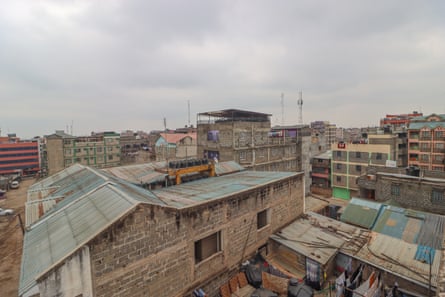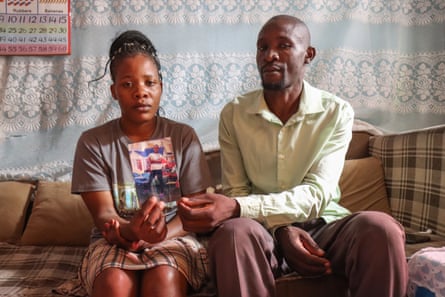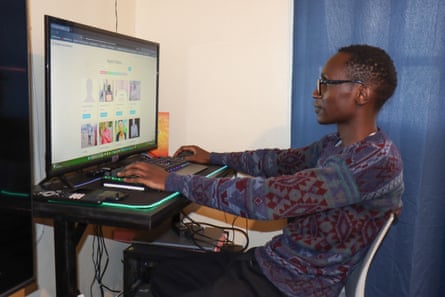One mid-morning in June, Emmanuel Kamau prepared to leave his home for work as a bus conductor in the Kenyan capital, Nairobi.
It was the second week of nationwide protests against proposed tax increases, and demonstrations were expected to disrupt the transport network. But as a casual worker who got jobs on an irregular basis, the 24-year-old decided to take a chance to try to earn some money to put food on the table.
As he and a colleague were about to leave the bedsit where Kamau lived with his mother in the Kasarani neighbourhood, she warned them to be careful and not to participate in the protests.
“I told them I don’t want to hear that either of them has taken part because although those who are protesting are fighting for our rights, they’re getting hurt,” Susan Wanjohi, Kamau’s mother, recalled.
It was the last time she saw her son.

The Kenya National Commission on Human Rights has recorded 66 cases of people who are thought to have been abducted or have gone missing since the protests began, leaving behind relatives and friends who are desperately searching for them.
The protests started in response to a specific bill aimed at raising taxes, but quickly encompassed wider demands for reform, increased government accountability and the resignation of the Kenyan president, William Ruto.
According to the KNCHR, at least 60 people have been killed and 601 injured in clashes with the police and other security personnel, and 1,376 have been arrested.
Some of those declared missing have resurfaced alive, but others have been found dead.
Hussein Khalid of the Haki Africa human rights organisation, accused the authorities of trying to “muzzle” the right to protest. “Enforced disappearances have unfortunately become the modus operandi for the security authorities during these protests,” said Khalid. “Not only is this practice unconstitutional but also illegal and an affront to people’s rights and liberties.”
Resila Onyango, the spokesperson for the National Police Service, said the Independent Policing Oversight Authority (IPOA), a civilian watchdog body for police work, was investigating allegations of police involvement in the disappearances, without providing details.
The IPOA did not respond to a request for comment.
At a public meeting in Mombasa on 28 July, Ruto dismissed claims that people had been abducted. “If there is any Kenyan who has disappeared, I want people to step forward and say Kenyan so-and-so has disappeared,” he said. “I will be very happy to deal with it.”
Kamau disappeared on the day Kenya witnessed unprecedented events as thousands of protesters demonstrated in the capital, with some storming into parliament and setting parts of it on fire. Police opened fire and used teargas on protesters. At least 23 people were killed and more sustained bullet wounds.
Colleagues say Kamau was working at a bus stop in the central business district at about 8.30pm when police started firing teargas. He and a few co-workers took cover inside a bus, before police took them from the vehicle and detained them, the colleagues said.
Kamau did not return home that night, triggering a search the following day by his parents, colleagues, friends and other relatives. For nearly two months, they have gone to numerous hospitals, mortuaries and police stations – in and outside Nairobi – but still have not found him.
Some of the reported abductions have taken place away from the street demonstrations.
Daniel Kaniu, a 38-year-old taxi driver, was abducted at a restaurant in the town of Juja in Kiambu county on 18 June, the day the protests started. CCTV footage shows masked men forcibly capturing him and forcing him inside a grey pickup.
His wife, Joyce Njara, last saw him that morning as he left for work. When his friends later told her that they could not reach him by phone, she reported the matter to the police.
Njara is hopeful of her husband’s return, but she worries for their three children, aged 11, five and one. “I feel very bad because the children can’t understand that their father has disappeared,” she said. “They keep asking questions: ‘Why isn’t he coming? Why isn’t he bringing us gifts like he used to?’”
For Njara, Wanjohi and others, the possibility that their relatives have been detained by police gives them hope that they are alive. But for other families, the search for their missing kin has ended in despair.

On a recent Monday morning at Nairobi’s city mortuary, Martin Wanjala and a handful of relatives huddled as they awaited a postmortem to be carried out on his sister-in-law Lilian Moseti.
Moseti, 19, had gone missing on 11 July in the town of Ruiru in Kiambu county, where was a street fruit vendor. When she failed to return to the home she lived in with Wanjala and her sister Mildred, Wanjala reported her disappearance to the police and the family started a frantic search. It ended three days later at the mortuary, where he and a friend found her body with a broken leg and deep cuts on her head, arms and legs.
Wanjala is pessimistic about getting answers for Moseti’s death.
“We don’t know where and how we’ll get justice,” he said. “We have no clue at all.”
One challenge with addressing disappearances during the protests is the lack of a public and dedicated database to document the cases. Oscar Oduor, a freelance web developer in Nairobi, has created a website, Missing Persons Database Kenya, for people to report cases of missing people and track progress in finding them.
Users can submit images and information on missing people, including where and when they were last seen, and contact information. Oduor and his partners verify it before publishing it, and he tracks developments for updates.

Oduor was inspired to create the database after seeing many social media reports of people missing when the demonstrations started, and realising that although some people were reporting the cases to the authorities, there was little search progress and very little information being made public to help in searches.
He said the protests had put extra scrutiny on abduction cases in Kenya and hoped the database would help the public in finding missing people and holding those in power to account.
“If the government puts out a statement about a missing person, we can look at the database and see if it relates to the information we have,” he said.
Wanjohi said that before Kamau went missing, she had never gone more than two days without knowing her son’s whereabouts. “I miss his presence because he’s my firstborn,” she said.
Source: theguardian.com


